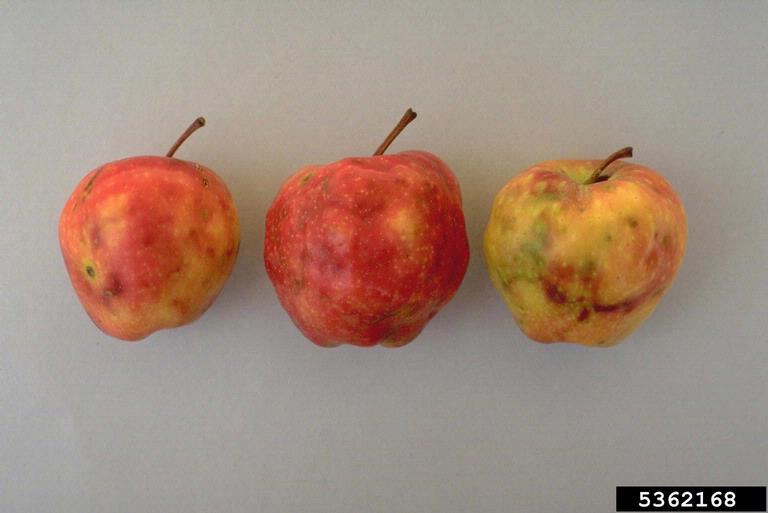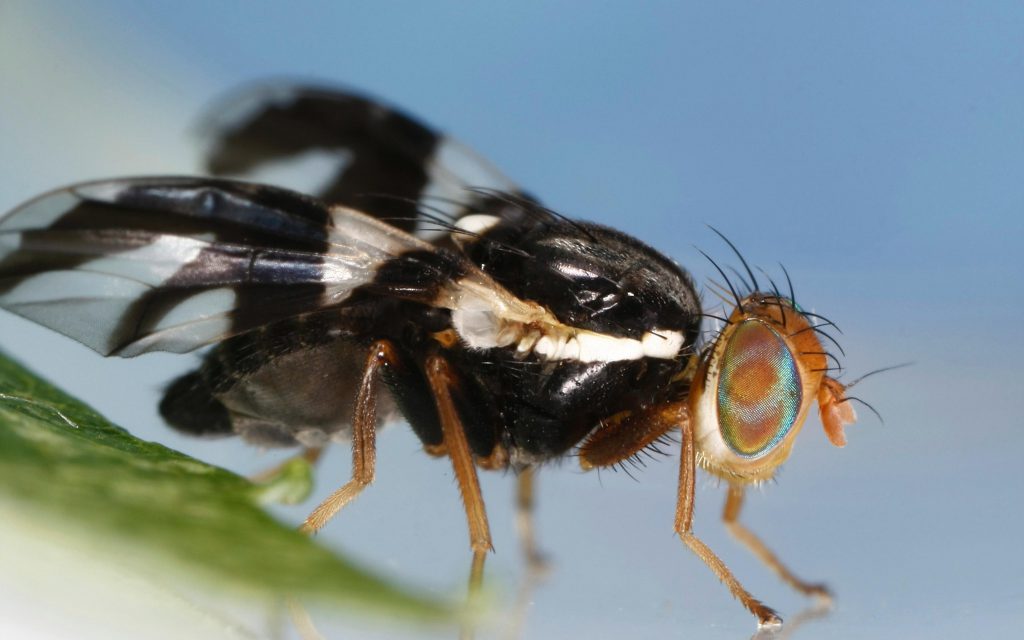Scientific name: Rhagoletis pomonella
What Is It?
The apple maggot is an insect native to eastern North America. It is considered one of the worst apple pests in the world, and is a major threat to Washington apple production. Adult maggots lay eggs inside the fruit. The eggs then hatch into young worms and consume the fruit, causing softening and decay.
Is It Here Yet?
Apple maggot was first found in Clark County in 1980. Today, it is in 22 of Washington’s 39 counties.
Why Should I Care?
Exotic apple fruit pests can damage trees and shrubs, and pose a serious threat to Washington’s fruit crops and commercial fruit industries. Apple maggots directly attack fruits such as apples, cranberries, cherries, pears, plums, and apricots, making them brown, mushy, and inedible. Exotic apple fruit pests also may attack other fruit trees, ornamentals, and other desirable plants.
How Can We Stop It?
- Treat infestations and do not transport infested apples.
- Follow quarantine regulations.
- Contact your local Washington State University Extension office, master gardener, or Washington State Department of Agriculture about suspected insects.
What Are Its Characteristics?
- Apple maggots are cream colored, maggot-shaped larvae that grow up to 1/4 inch when mature.
- Adults are also black-bodied.
- Wing patterns are banded with black markings.
- It is easy to identify these flies to family but very difficult to identify the species. For identification of species, contact your local Washington State University Extension office or master gardener.
How Do I Distinguish It From Native Species?
- There are some commonly occurring fruit flies that look similar, if not exactly like the apple maggot such as the snowberry maggot, walnut husk fly, and cherry fruit fly. Check out the resource in the above ‘Other Materials’ section titled ‘Washington State University – Apple Maggot Identification and Look-alikes’.
- Other worms inside apples may be confused with apple maggot; however caterpillars like codling moths feed in the apple’s core while apple maggots feed on the fruit flesh. Check out the third resource in the above ‘Other Materials’ section titled ‘Washington State University – Coddling Moth vs. Apple Maggot Damage’
Additional Photographs





